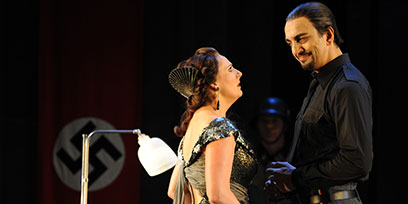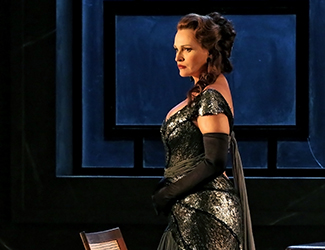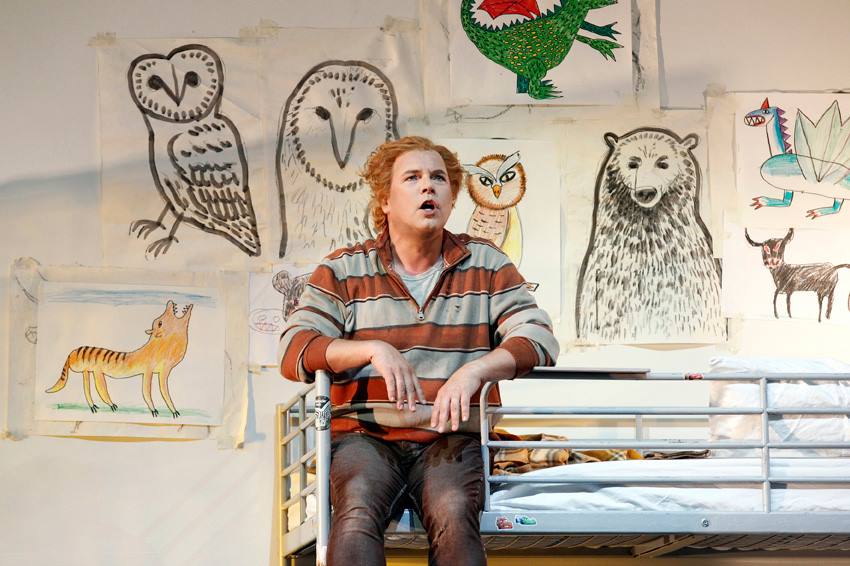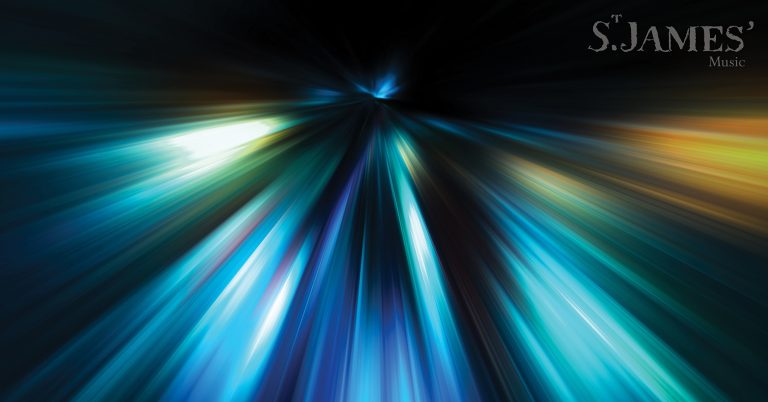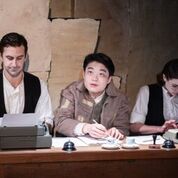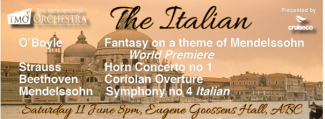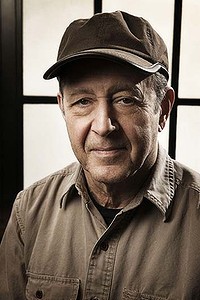Review: Tosca/Opera Australia
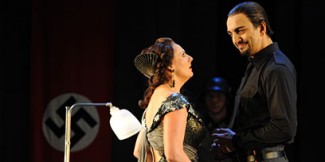
Photo credit Branco Gaica, courtesy Opera Australia
Tosca – Giacomo Puccini
Opera Australia, Sydney Opera House,
13 January 2015
John Bell’s production of Tosca for Opera Australia was first seen 18 months ago. It was very successful then, and is perhaps even more so in the current revival. This compelling production is set in Rome in 1943 during the Nazi occupation with Scarpia presented as a chillingly despicable tyrant backed by his military force. Michael Scott-Mitchell’s sets remain very impressive and Nick Schlieper’s lighting subtly reflects the changes of atmosphere.
The rehearsal director, Roger Press, is to be congratulated for recreating, and indeed even increasing the dramatic tension of Bell’s production. Numerous details of characterisation and dramatic interaction give the impression that the production has matured, even though most of the singers are new to it. The dramatic cohesion of the production would be further strengthened, however, if there was less ‘stand and deliver’ to the audience during the opera’s principal arias.
Nevertheless, the level of dramatic interaction is high. In the first act the romantic relationship between Cavaradossi and the jealous Tosca is more convincingly established than in the original production. Cavaradossi is clearly preoccupied with the hidden presence of Angelotti, convincingly provoking Tosca’s suspicions. In the second act the killing of Scarpia is always a dramatic high point in any good production; here it is absolutely spell-binding with powerful performances from both Echalaz and Sgura.
Tosca is sung by Amanda Echalaz who has a solid but well-focused spinto voice which is easily capable of scaling the role’s climaxes although she can also rein it in for the softer passages. In the first act she strode onto the stage every inch a prima donna, but then nicely reflected Tosca’s changing emotions from ardour, to furious jealousy and then to despair at Cavaradossi’s supposed infidelity. Similarly in Act 2 she portrayed well the sequence of Tosca’s changing emotions. Her slight figure underscores Tosca’s essential vulnerability.
As Cavaradossi, Riccardo Massi looks good on stage. He is tall and one can see why Tosca has fallen for him. He has an attractively Italianate sound though perhaps his voice is not as large as some we have heard in previous productions. Nevertheless, he projected some truly heroic passages and also produced some fine quieter legato singing. His interpretation was enlivened by small dramatic details such as his ongoing worry in Act 1 that Tosca may learn of Angelotti’s presence.
Claudio Sgura was introduced to Sydney audiences last year as a memorable Iago and he returns to sing another arch-villain, Scarpia. Sgura brings a full, rich, dark baritone to the role. His looming physical presence oozes menace, though the frequently raised eyebrows and some of the facial expressions perhaps owe a little too much to the tradition of melodrama.
The minor roles were also well sung and dramatised. David Parkin sang the role of Angelotti two years ago when this production was first presented. He again sings the role well and his interpretation now seems better integrated dramatically.
It was interesting to see the Sacristan performed by Luke Gabbedy after so many years of the role being performed by John Bolton Wood. Gabbedy’s interpretation is refreshingly different – languid and rather bored – though his sluggish entry seemed somewhat at odds with the bouncy accompanying music from the orchestra.
Benjamin Rasheed gave a nice portrayal of Spoletta as the unctuous sycophant whose penetrating eyes miss nothing and who is always there just when Scarpia needs him. Adrian Tamburini sang the small role of Sciarrone and Tom Hamilton was the Gaoler. Their fine sounds made one wish the roles had been a little larger. Dominic Grimshaw sang the role of the Shepherd Boy creditably, as he did in the original production.
The singing of the chorus at the end of Act 1 was thunderous and hugely impressive. Dramatically, the coerced Nazi salute on the final chords is chilling – as it is meant to be – and requires several deep breaths before leaving the theatre for interval.
The conductor was the young Italian Andrea Battistoni who paced the work well, with the natural ebb and flow which is essential in Puccini. His direction is vigorous and clear, and injected a great deal of energy into the performance. This was nicely contrasted with the lyrical passages in which he tended to adopt rather leisurely tempi. Battistoni is also to be commended for restoring the three bars after Vissi d’arte which are usually cut. The strings produced a richer sound than often emanates from the constricted pit. In the last act, there was a fine clarinet solo and some well-disciplined playing from the horns – who are unfortunately not named in the $20 glossy programme.
This run of Tosca performances is Opera Australia’s third revival for the year. There is a widespread view among subscribers that OA’s 2015 season is probably the most lacklustre and disappointing for many years. The two previous revivals also opened the summer season last year. The only operas programmed for 2015 that have not been seen recently are Don Carlo and Faust. They are welcome, but they are the only two for the entire year. Apart from a new Marriage of Figaro the remainder are revivals which have been trotted out regularly in recent years. The season planners seem to have overlooked their vast archive of older productions which have not been seen for many years and which could be revived successfully and economically. The Cole Porter musical Anything Goes, which will have a long run of two months, is unlikely to attract many regular opera-goers. Whether it will attract the wider audience for musicals remains to be seen. Nevertheless, if we must have continual revivals of a small number of productions, we can at least be thankful that this revival of Tosca is so successful both dramatically and musically. Performances continue until 17 March 2015.
Larry Turner for SoundsLikeSydney©
Larry Turner has been singing in choirs for many years – both in Sydney and London. He is an avid attender of operas and concerts, with an emphasis on vocal music. He particularly enjoys music from both the great a capella period and the baroque – especially the lesser-known works of Bach and Handel. He has written programme notes for Sydney Philharmonia, the Intervarsity Choral Festival and the Sydneian Bach Choir and is currently part of a team researching the history of Sydney Philharmonia for its forthcoming centenary.

